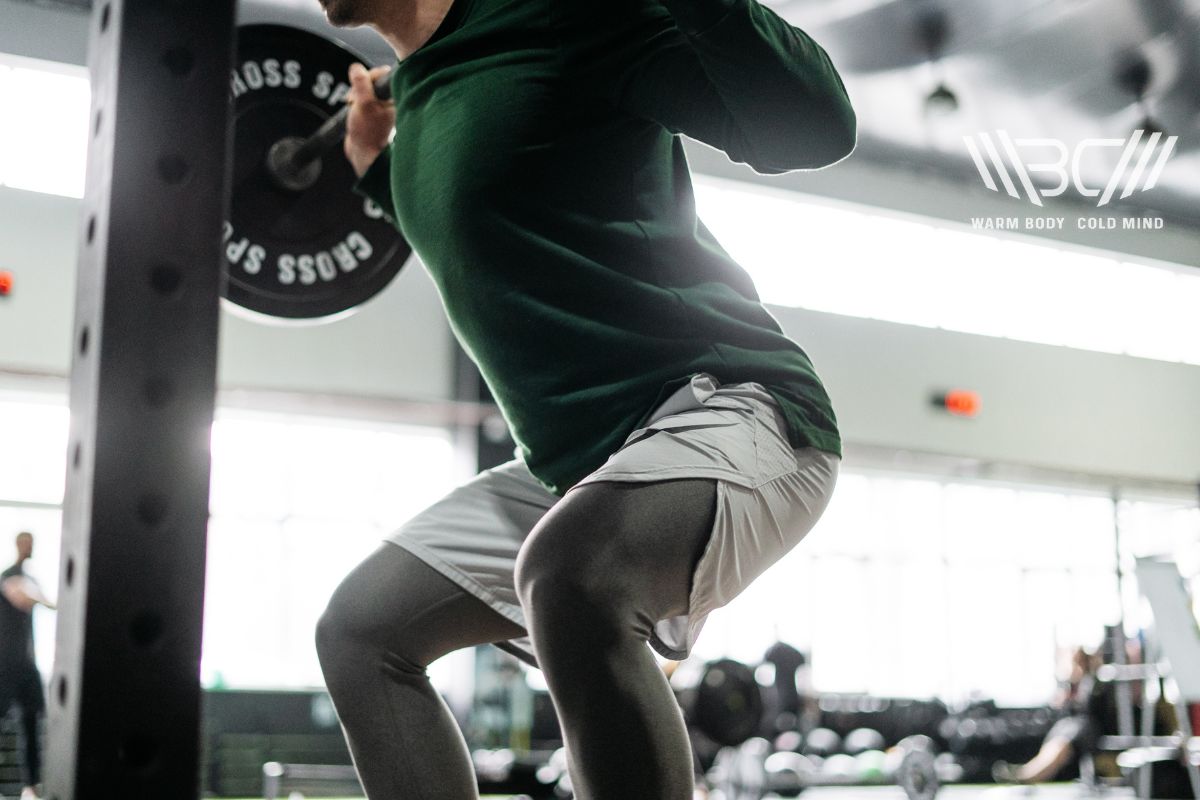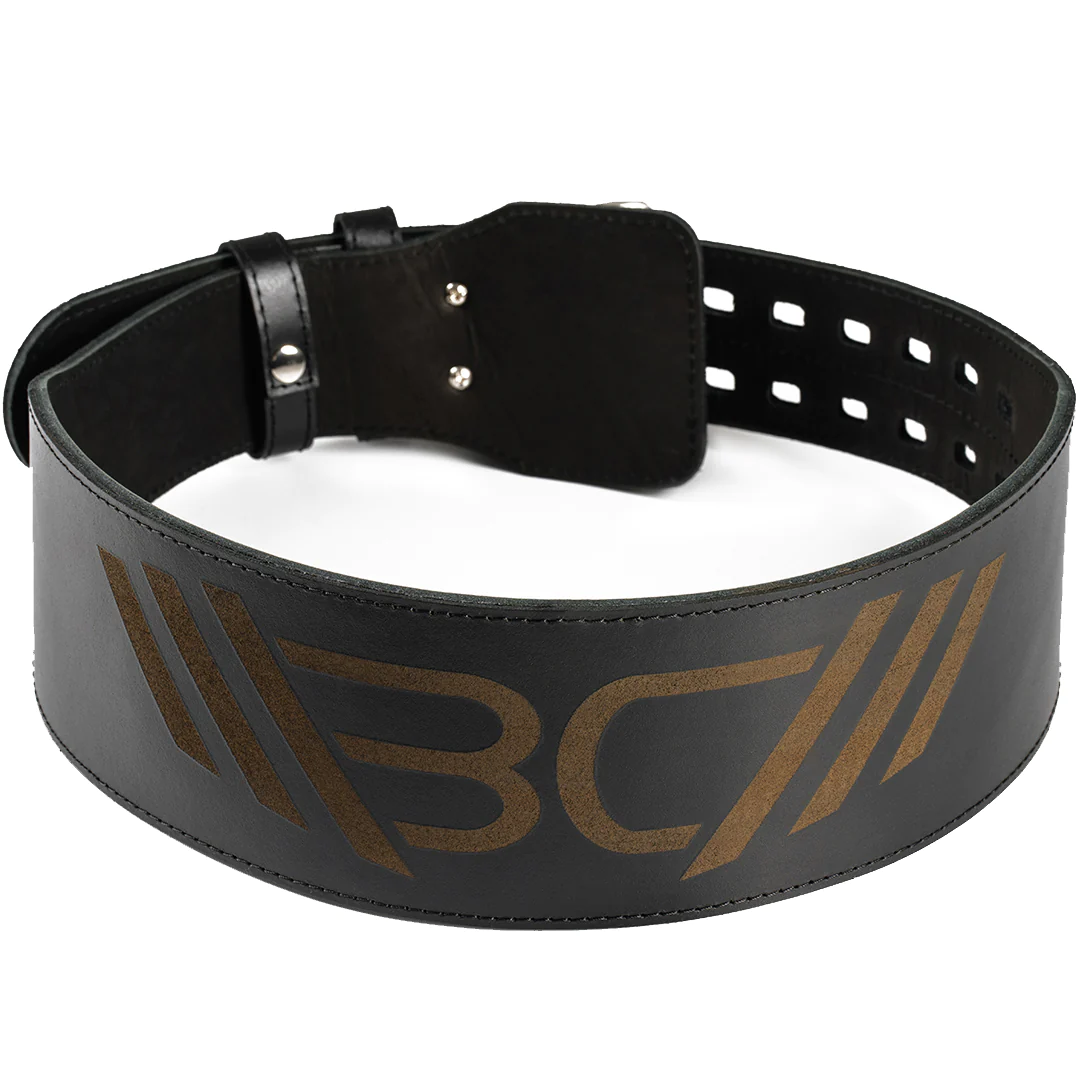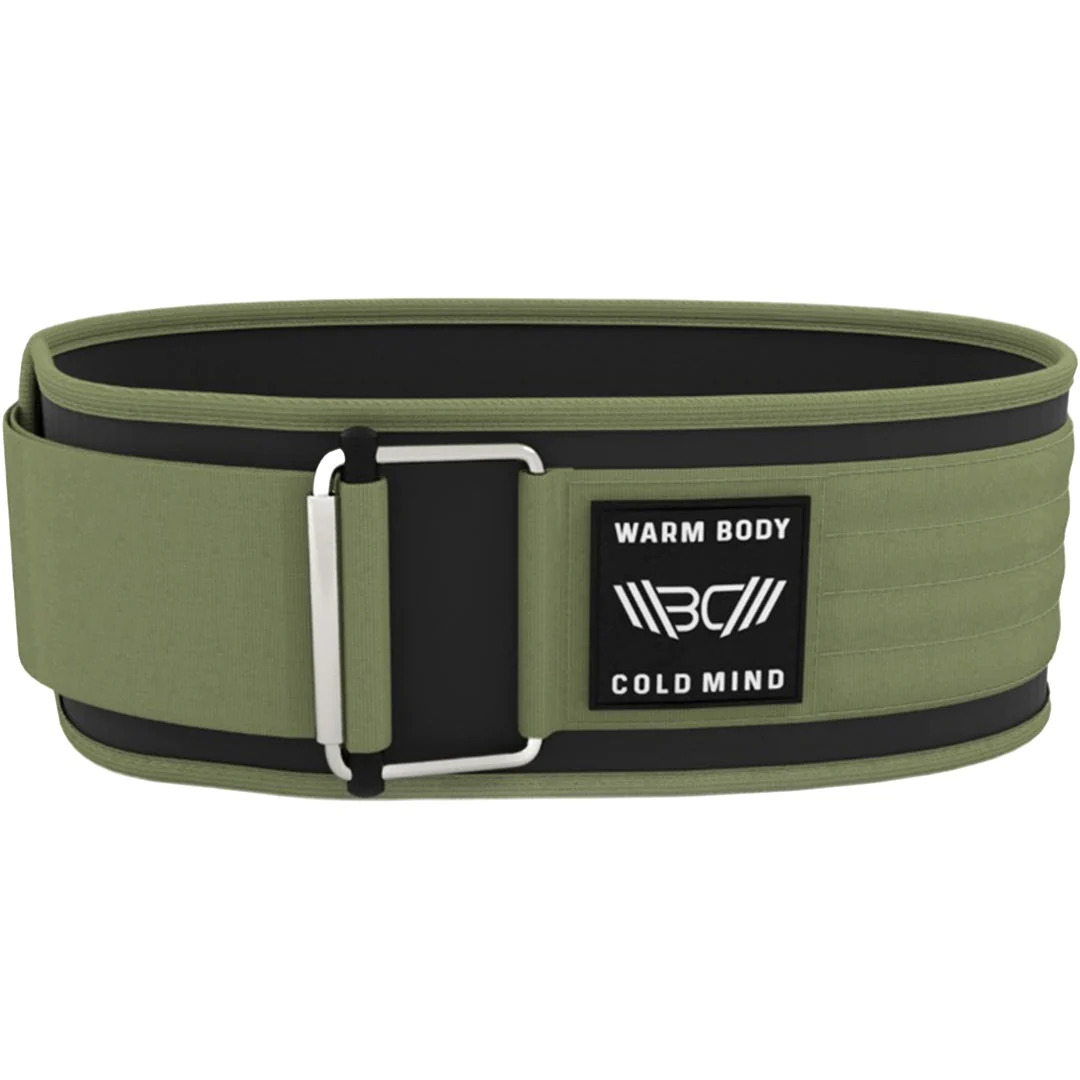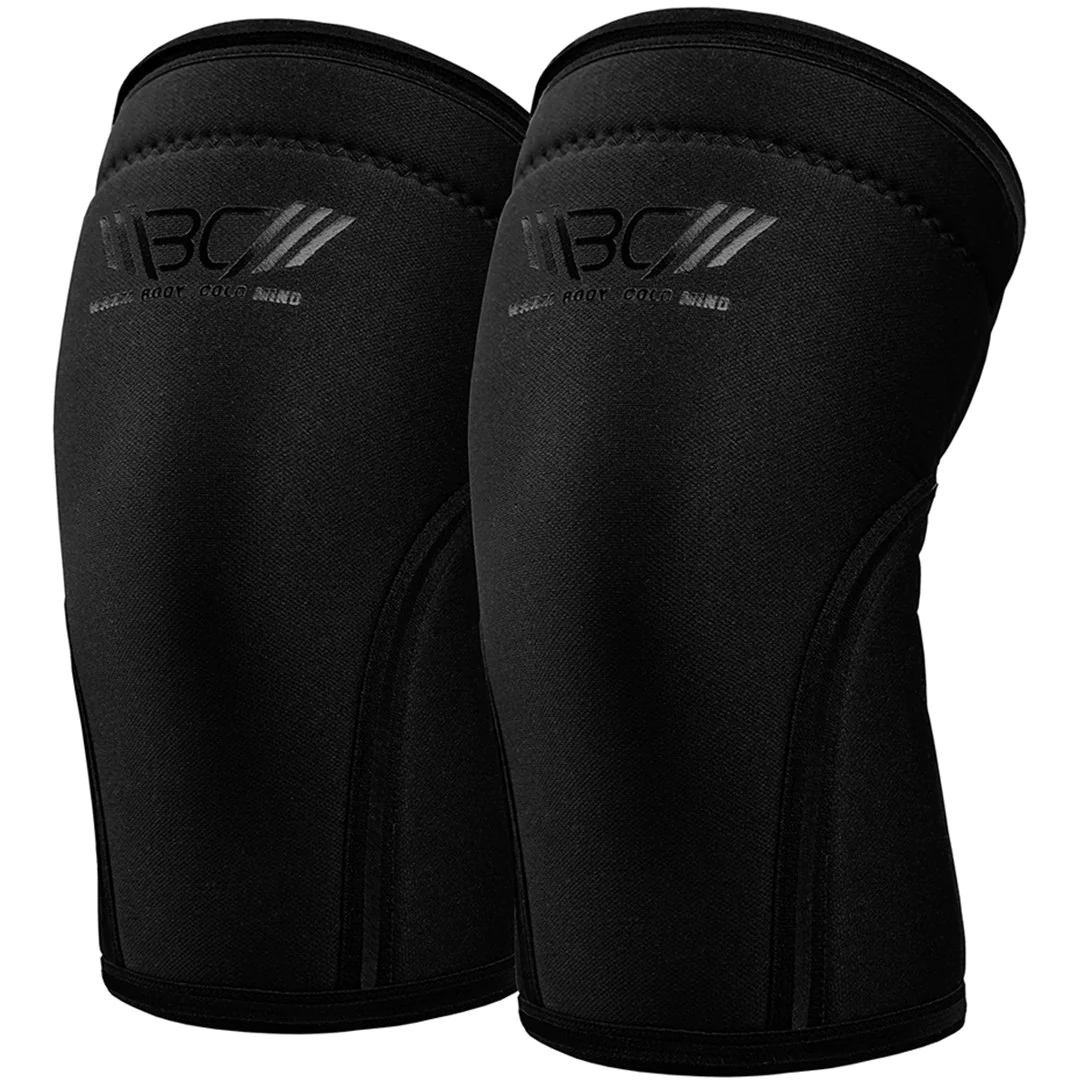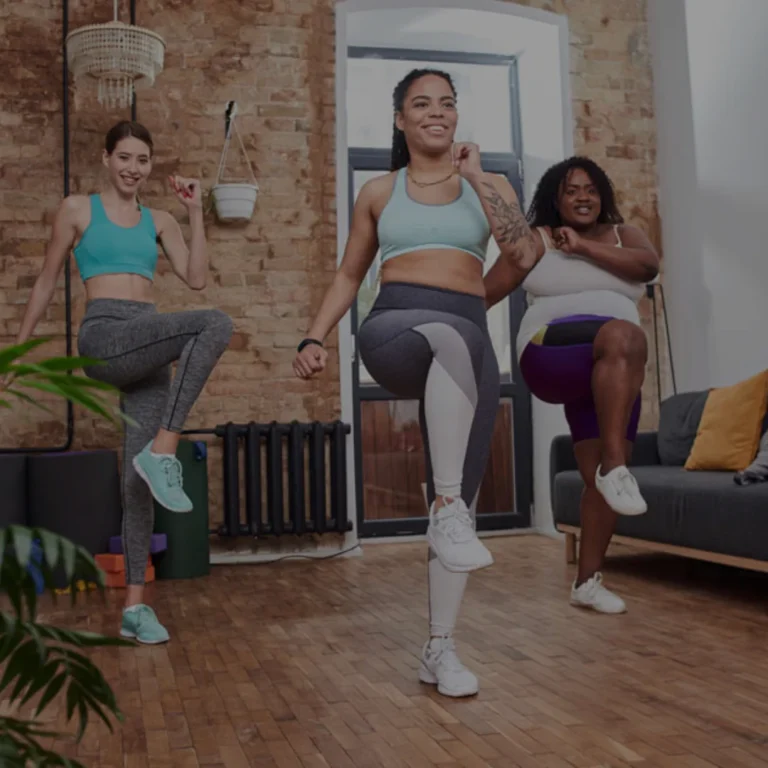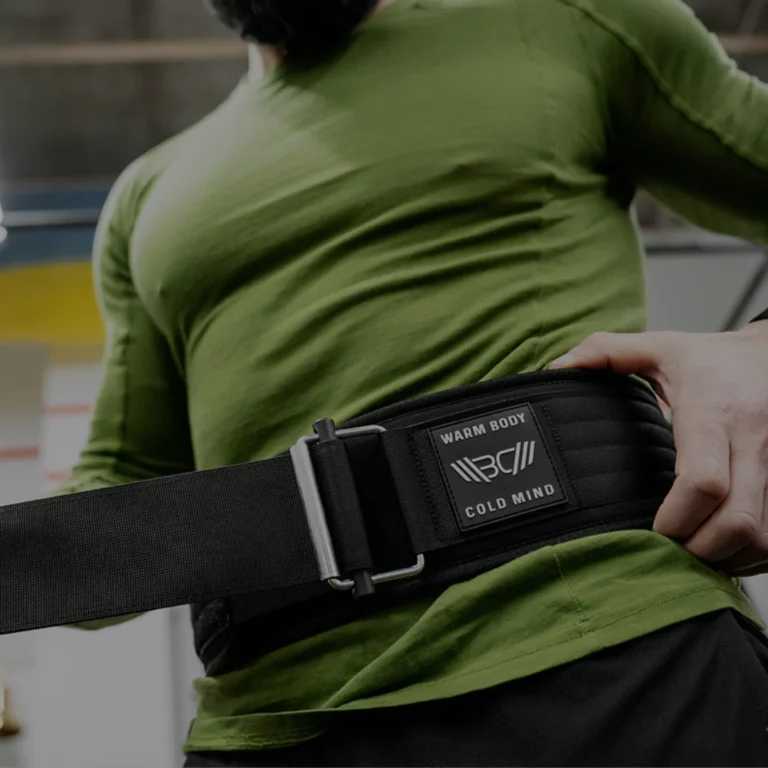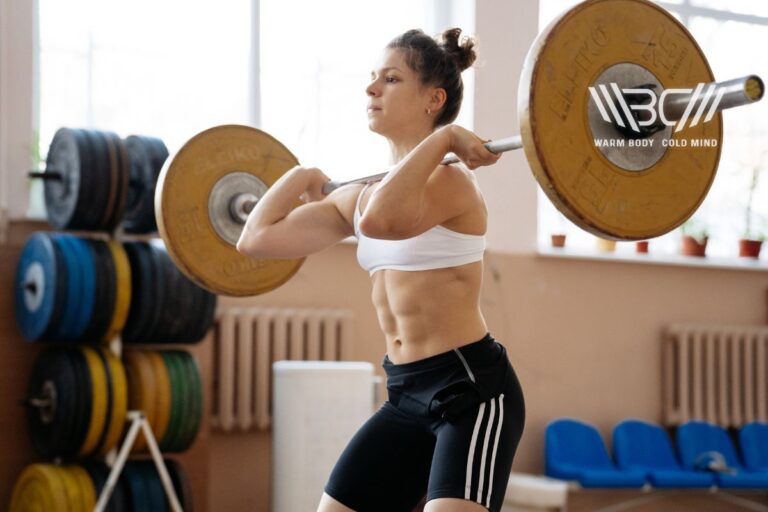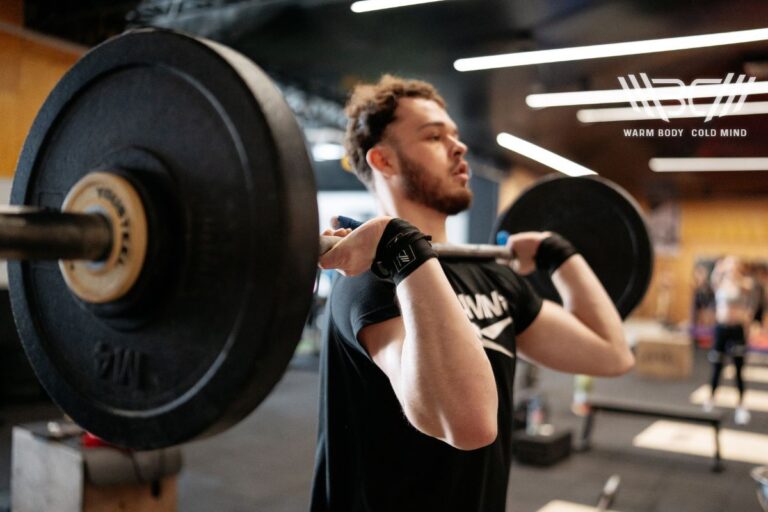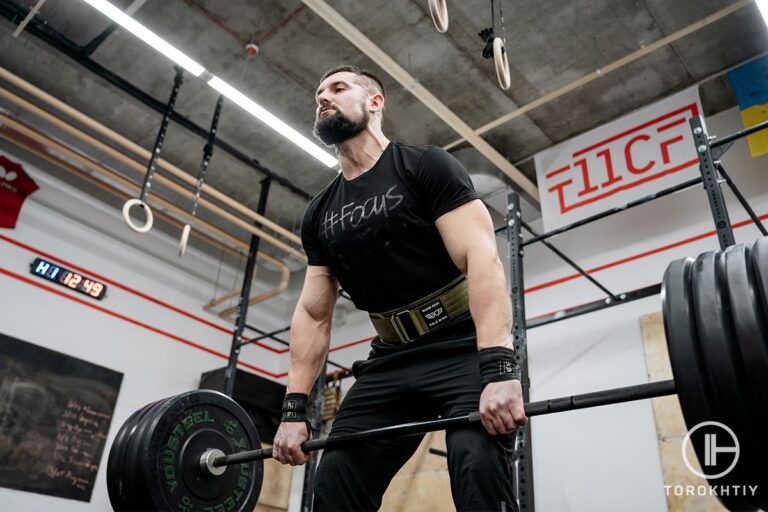Leaning Forward During Squat: 3 Fixes Explained
Many people find that they have to be leaning forward during squat attempts to complete the exercise. However, the same people might experience criticism from others or self-doubt about their squatting technique. So, should you lean forward when squatting or not? If so, what’s the appropriate torso angle? All that and more answered in a second, but first, a quick summary:
Slight leaning forward during squat exercises, especially low-bar squats, is a normal occurrence and is necessary for balance. The optimal lean angle will depend on your proportions, however, it’s widely accepted that bending your torso below 45 degrees is excessive forward lean in squat attempts.
Leaning Forward During Squats
Let’s get one thing out of the way immediately — most people can’t squat without leaning forward at least a little, especially during barbell back squats. Unless you have abnormally large trapezius or deltoid (upper back and shoulders) muscles, you need a slight bend forward for the muscles to create the “shelf” on which to rest your barbell.
However, there is a difference between naturally leaning forward in squat exercises to support the weight and facilitate a proper movement pattern and balance vs. excessive leaning forward. Leaning too far forward typically suggests an issue with exercise form or mobility, both of which need addressing. A compromised squat is dangerous and can lead to serious injury in your back and lower body in particular.
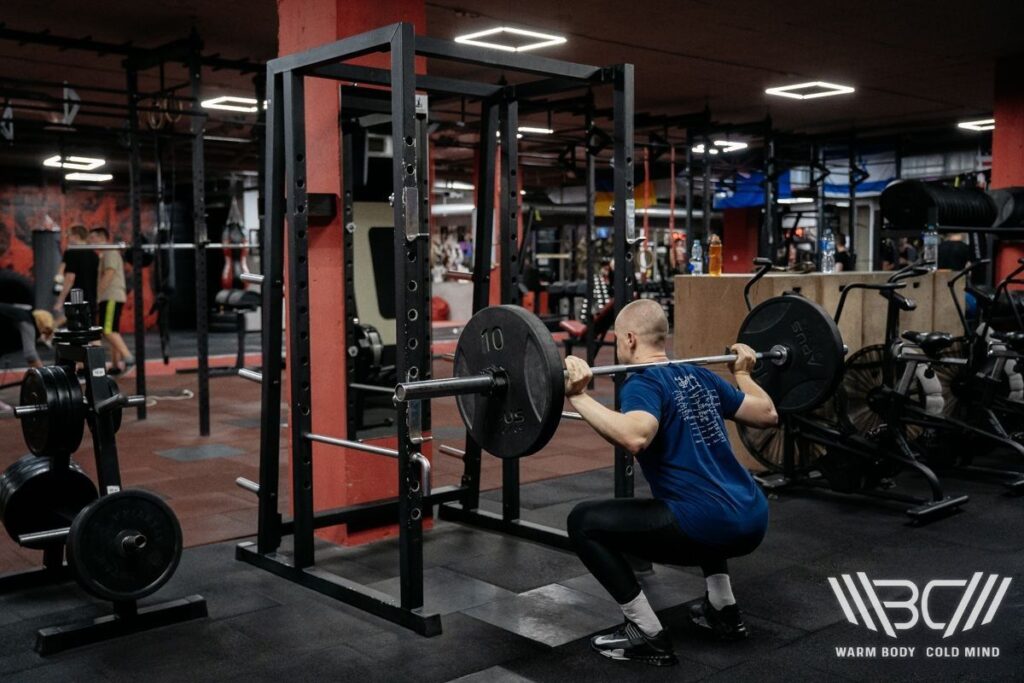
What A Proper Squat Looks Like And What The Lean Should Be?
People want to know how to stop leaning forward when squatting. But truth be told, that question is wrong. The right question is, what is the optimal lean forward relative to my size, athletic capabilities, and squatting technique? If you’re a healthy adult, your squat should look like this:
- The barbell is in line with your mid-foot
- The spine remains neutral (straight back)
- Feet fully grounded, toes pointing slightly outward
- Knees and hips bend simultaneously (one movement)
- The barbell travels vertically in a straight line
- Knees do bend past the imaginary toe line (over the toes)
- The hips move back and down to achieve depth
- No (intentional) pushing forward with the knees
If these parameters are met, then your squat technique is all but correct, as far as we can tell without looking at you. The lean you experience this way is likely a result of your biomechanics and is normal for your build. That said, later in the article we will share some tips that might help you improve.
How much you lean in with your torso will depend on your comfort level and squat technique, but you should avoid leaning in over 45 degrees. Beyond this point, the bar is no longer supported by your back, and the center of gravity is too far forward, which can cause loss of balance and/or the weight collapsing on you.

Pro Tip:
Nowadays, you can learn any exercise from an online tutorial. That said, it’s always recommended that beginners train with coaches or trainers, especially for complex exercises like squats. If you don’t have access to in-person feedback, join an online fitness community where you can share progress videos and get assessments from experienced people.
How Do You Know If You Have An Excessive Forward Lean In Your Squat?
We’ve established that most people can’t squat without leaning forward and that it’s okay if this is the case. So, how do you know if you have excessive forward lean in squats? It mostly comes down to the torso angle and bar position. Remember, the bar should stay in an imaginary line with the middle of your foot and travel up and down in a straight line, and your torso shouldn’t go past 45 degrees.
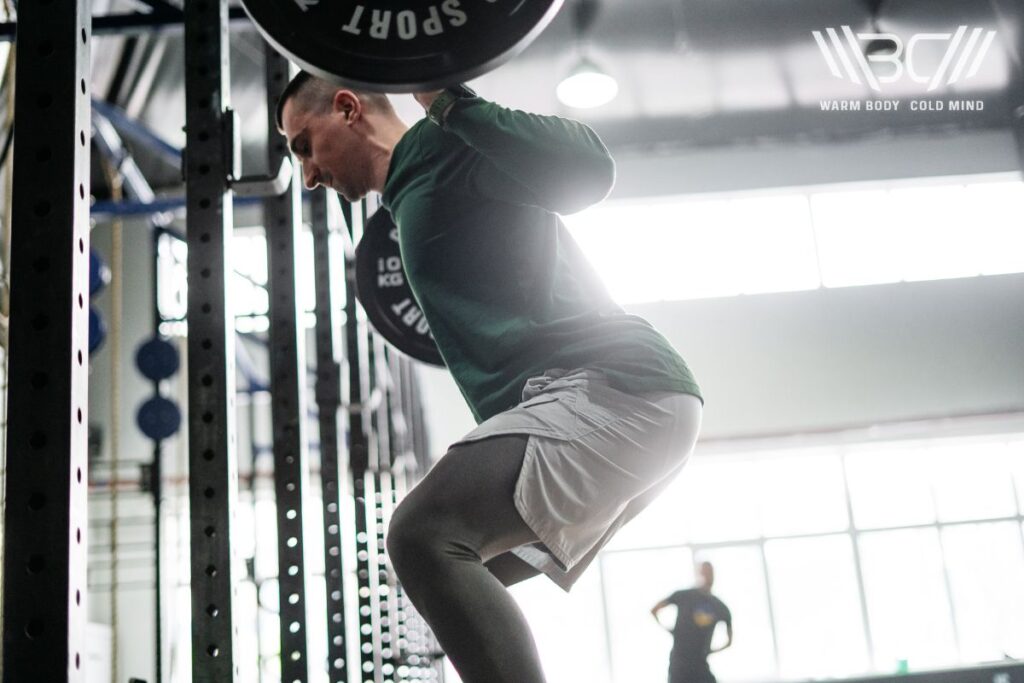
The most obvious way to check if you lean in too much is to train in front of a mirror or record yourself while squatting and paying attention to your barbell travel pattern and torso angle. Issues with balance, and especially the feeling of falling forward, are also a telltale sign.
Additionally, pay attention to your foot pressure throughout the exercise. Squats are driven through your heels, if you feel excessive pressure on or feel the need to push from the balls of your feet, that’s a clear sign of too much leaning forward in squats.
6 Main Causes Of Leaning Forward When Squatting
So, why do you lean forward when you squat? Here are some factors that will influence your posture. Some of these can be easily corrected, while others will simply have to be worked around.
1. Proportional Differences
Squats, like any complex exercise, have a fundamentally agreed-upon technique that’s meant to keep the exercise effective and safe for everybody. However, body proportions influence how the exercise will look and feel from person to person. This is the main reason people judging those who can’t squat without leaning forward are simply wrong.
Squat performance can be influenced by physical traits like the ratio between leg bones and trunk length. The two main leg bones include the Femur AKA the thigh bone, which connects the hip to the knee, and the Tibia AKA the shin bone which connects the knee to the ankle.

A shorter tibia relative to your femur allows for an easier upright posture in squats, as the knee can move forward without excessive leaning. Conversely, a longer tibia may require more forward lean to maintain balance and squat depth.
In addition, people who have a longer torso relative to their legs will find it easier to stay upright. Moreover, the study implies that stance width is also an influential factor in how much we have to lean forward to bend our ankles during squats.
2. Barbell Placement
How you carry, or in other words where you place the barbell will influence how far you will be leaning forward during squat attempts. In the case of the traditional back squat, there are two common positions: high-bar and low-bar squats. When doing high-bar squats, we place the barbell higher on the trapezius muscles. In low-bar squats, the bar sits on the rear deltoids and upper back.
In a study doing a direct comparison between the two, low-bar squats can carry more weight but demand a greater forward lean. The choice between the two obviously comes down to personal preference. But, for the purposes of this article, it’s good to know that a high-bar squat position demands less forward lean. So, if you experience excessive forward lean in squat attempts, high-bar squats may prove best for you.
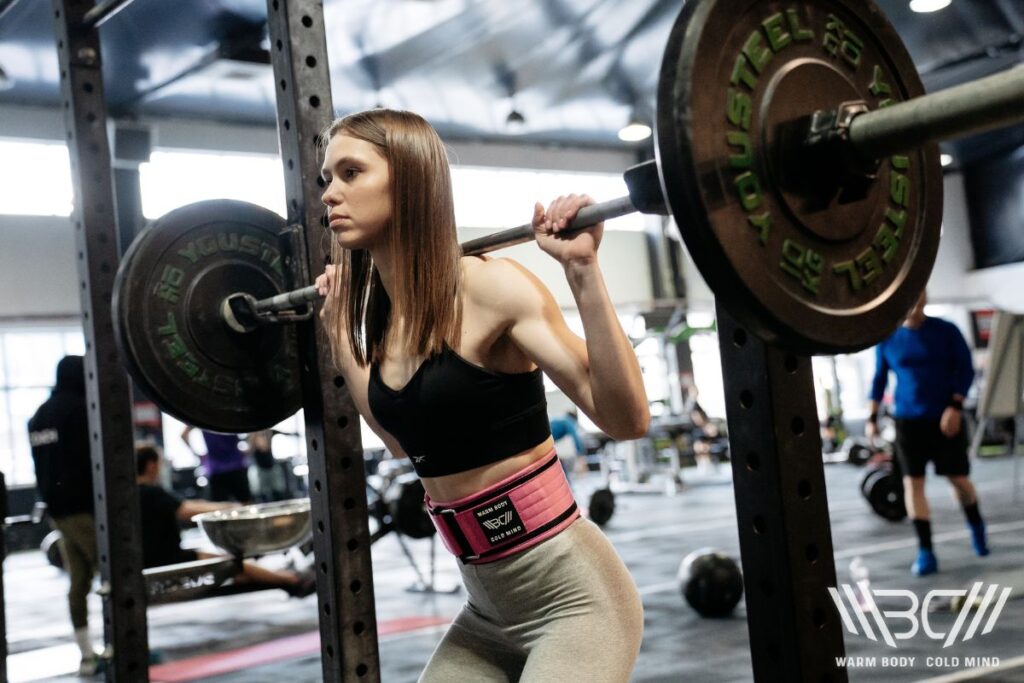
3. Looking Down
We’ve established that a slightly leaning forward in squat attempts is normal and that the angle will depend on your proportions and squat technique. Since our spine is already at an angle, and conventional exercise tips say to keep our spine straight during squats, it may seem natural to keep our heads aligned. However, if we keep our heads aligned, our gaze will naturally go to the floor.
From this position, it can feel natural to look down during your squat. However, looking down during squats leads to increased hip flexion and, in some cases, trunk flexion as well. This will shift your center of gravity forward, mandating a more pronounced forward lean to keep your squat steady.

Pro Tip:
If you’ve trained looking down when you squat, it can be difficult to course-correct, but doing so will help you squat more safely and healthily. For many people, correcting this is an easy fix for leaning forward in squat attempts.
4. Weak Spine
Although the squat is primarily driven through leg movement, working your quads, glutes, and hamstrings, the weight load is supported by your spine. A weak spine can significantly reduce the amount of weight you can support during squats even if you have the necessary leg strength to carry it up and down.
Spinal issues have been on the rise globally, in no part thanks to increasingly sedentary lifestyles. For this reason, advanced lifters often use weightlifting belts to create intra-abdominal pressure to reduce forces felt on the spinal discs.
If you’re a heavy lifter, we suggest our Warm Body Cold Mind Leather Weightlifting Belt, crafted from premium A-grade leather with a 6mm thickness for optimal support and comfort. It boasts a virtually indestructible double-prong stainless steel buckle and tapers at the front to leave room for core mobility.

Enhance your strength training with Warm Body Cold Mind leather weightlifting belt providing exceptional support and durability.
Alternatively, if you train for function over weight and need something more flexible, opt for a nylon belt. Our Warm Body Cold Mind Nylon Weightlifting Belt features a quality quick-locking metal clasp, durable velcro strap, standardized 4-inch width, and five size options (S, M, L, XL, XXL), in black, blue, pink, and khaki.

Discover the strength of the Warm Body Cold Mind nylon lifting belt. Lightweight and durable, it provides optimal support for your workouts.
5. Insufficient Mobility
Insufficient ankle dorsiflexion, AKA the ability of your ankle to bend upward, can limit how deep down you can squat. When you squat, your feet remain firmly planted on the ground, and one of the key movements involves your ankles bending forward as you go down.
However, if you lack the flexibility to bend the ankle forward, you’ll have to compensate by pushing further back with your hips. Consequently, pushing your hips further back causes your upper body to lean forward.
6. Using Too Much Weight
Out of the hundreds of people we’ve coached in real life and the thousands more who’ve taken up our online squat courses, one reason for leaning forward that flies under the radar is simply using too much weight.
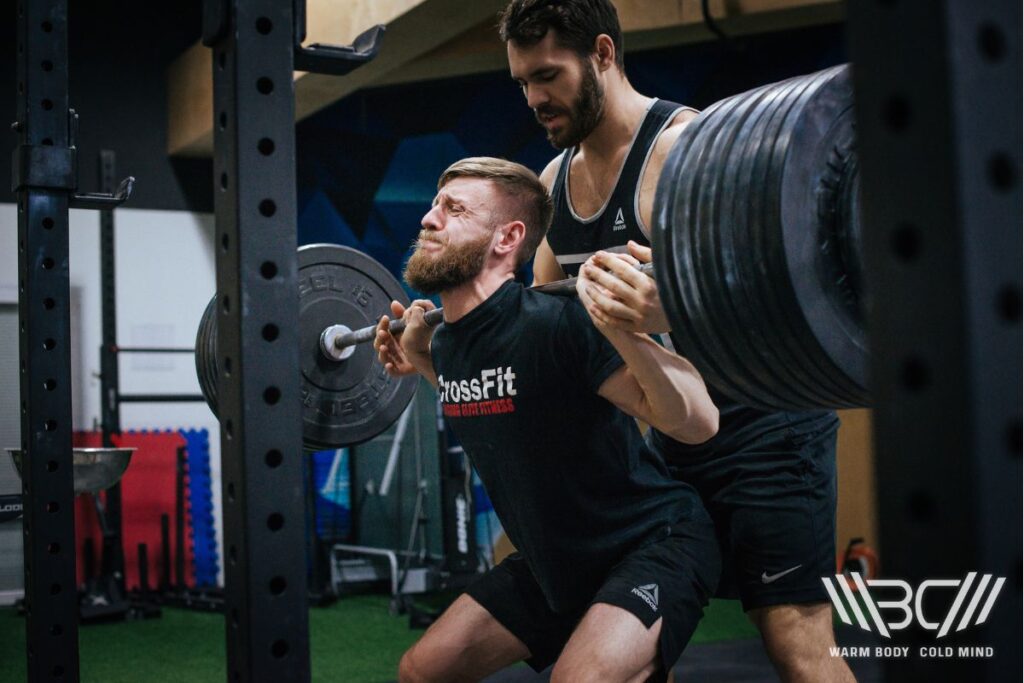
Adding an excessive load relative to your strength level will cause your body to instinctively look for the most mechanically advantageous position for supporting the weight. In such cases, your squat technique might be compromised as your body tries to course-correct.
In the example of squats, the torso might start leaning forward and the hips move further back to reduce the load on your knees and avoid collapsing. Weak knees can also prove problematic for balancing large amounts of weight, which is why powerlifters and professional weightlifters use knee support such as sleeves.
Sleeves add compression and warmth to the joint, reassuring the structure and stimulating blood flow. If you feel like added knee support could improve your squats, we suggest our Warm Body Cold Mind 7mm Knee Sleeves. They’re made from breathable and flexible neoprene and contoured to fit well over kneecaps without slipping, plus they’re unisex with a wide range of sizes.

7mm Weightlifting Knee Sleeves
Discover the ultimate support with Warm Body Cold Mind knee sleeves providing stability and comfort.
3 Tips To Correct Leaning Forward When Squatting
Now you know what causes leaning forward during squats. Next up, we’re sharing a couple of tips you can start using today that will correct excessive forward leaning.
1. Heel Elevation
Elevating your heel during squats can promote a more upright posture. An elevated heel naturally puts the hip and trunk area in a more forward position. According to research, an increase of 2.5 cm, which is roughly 1 inch, is sufficient to reduce bending forward. Professional lifters achieve this by wearing weightlifting shoes, which typically add between 20-25 mm or 0.8-1” of heel height.

Pro Tip:
You don’t have to buy expensive weightlifting shoes to do elevated-heel squats. Simply add support beneath your heel using a pair of weight plates or a different elevated platform. Just aim for roughly 20-25 mm/0.8-1”, which is standard for an 11 lbs/5 kg plate.
2. Training In Front Of A Mirror
Contrary to social media trends, mirrors at the gym, and especially in the weightlifting area aren’t there for taking pictures or filming yourself. In complex exercises such as squats, they serve to give us real-time visual feedback on what we’re doing.
Using a mirror not only helps us judge our technique better but also provides a focal point for our eyes, keeping them engaged and preventing the tendency to look down during the exercise.
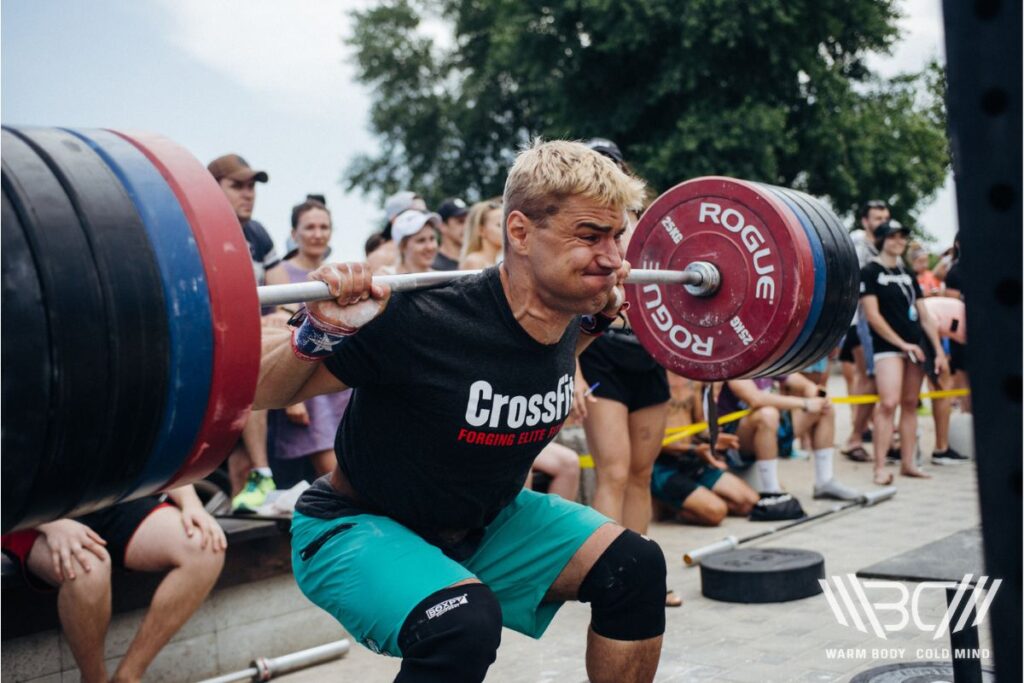
3. Mobility Exercises
Mobility is a surprisingly overlooked component when it comes to squats. Although a squat is a natural movement most people pick up in daily life, mobility training can significantly enhance squat performance and reduce the risk of injury. Mobility exercises are important regardless of your general workout goals. At the very least, you should set aside time in your warmup for some drills.
The relationship between the spine, hips, and ankles is crucial for a comfortable and deep squat. Our favorite spine stretches include spine rotations, car-cow (sometimes called cat-dog) poses, and foam rolling.
For hip mobility, hip rotations, flexor stretches, and pigeon poses are great. For ankles, ankle circles, dorsiflexion stretches, and calf stretches work well. Additionally, practicing bodyweight squats (without added weight) is always a good idea.
Subscribe!
The latest reviews of must-have home gym training equipment, apparel, and supplements that will enhance your performance and bring you new results.
Can An Excessive Forward Lean In Squats Cause Injury?
Yes, squats are already well-known for their complexity and subsequent injury risk. An excessive forward lean in squats can exacerbate this. Particularly the spine seems to take the biggest hit when you lean too much. There is a known correlation between greater forward leaning during a squat and the increase in lumbar shear forces, especially in later sets and reps when fatigue starts to settle in.
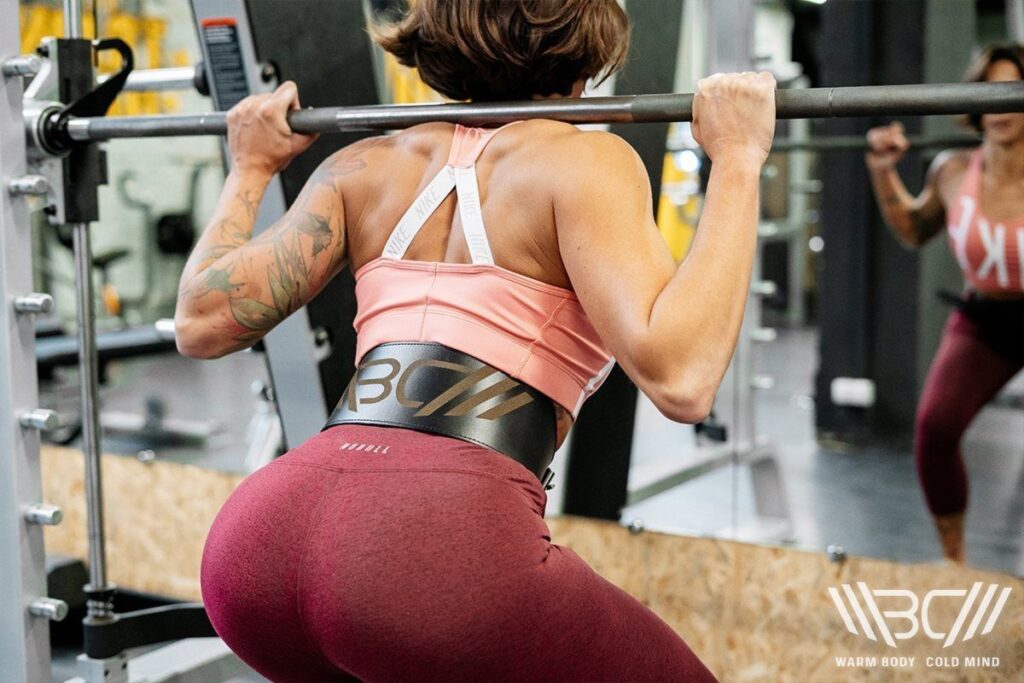
Additionally, leaning too far forward during squats can lead to imbalance and overloading on your muscles and joints, increasing the risk of strains, sprains, and other musculoskeletal injuries. It also compromises your technique, which may result in bad habits that could increase the risk of injury in the future.
FAQ
How Much Should You Lean Forward In Squats?
How much you lean forward will depend on your proportions and squat technique. A low-bar squat requires more lean than a high-bar squat, for example. Avoid leaning over 45 degrees. Most people find themselves bending over at 80-60 degrees.
Why Do I Lean To The Right When Squatting?
Check your squat posture and foot position, you could be standing wrong. Alternatively, it could simply be a result of muscle imbalances, especially in beginners. Most people are right-sided, so it’s not unusual for your body to tend to draw strength from that side.
How Do You Know If You’re Squatting Wrong?
The best way to tell is to ask for feedback from a certified coach or trainer. Otherwise, training in front of a mirror and recording your progress can help you get a picture of what you’re doing is good.
Conclusion
Now you know how to deal with leaning forward during squat attempts. As demonstrated, most people can’t squat without leaning forward at least somewhat. The slight lean helps balance the barbell on the upper back and provides a better starting position for your hips.
Remember that people’s necessity to lean forward can depend on several factors, including body proportions and technique preferences. As long as you’re not leaning forward excessively, like over 45 degrees, and the barbell travels up and down in a straight line, you’re doing well.
We’d love to hear from you as well. What’s your favorite squat technique? How do you monitor your technique and progress? Leave a comment letting us know and remember to follow us on social media pages for more valuable fitness content.
References:
- Amy Chang, Grant Breeland, Asa C. Black, John B. Hubbard, “Anatomy, Bony Pelvis and Lower Limb: Femur,” StatPearls [Internet] (Treasure Island, FL: StatPearls Publishing, 2023).
- Chris Bishop, Anthony N. Turner, “Integrated Approach to Correcting the High-Bar Back Squat From Excessive Forward Leaning,” Strength & Conditioning Journal vol. 39, no. 6 (2017), 1.
- Daniel J. Glassbrook, Eric R. Helms, Scott R. Brown, Adam G. Storey, “A Review of the Biomechanical Differences Between the High-Bar and Low-Bar Back-Squat,” Journal of Strength and Conditioning Research vol. 31, no. 9 (2017), 2618-2634.
- David R. Hooper, Tunde K. Szivak, Brett A. Comstock, Courtenay Dunn-Lewis, Jenna M. Apicella, Neil A. Kelly, Brent C. Creighton, Shawn D. Flanagan, David P. Looney, Jeff S. Volek, Carl M. Maresh, William J. Kraemer, “Effects of fatigue from resistance training on barbell back squat biomechanics,” Journal of Strength and Conditioning Research vol. 28, no. 4 (2014), 1127-1134.
- David V. Donnelly, William P. Berg, Darryn M. Fiske, “The effect of the direction of gaze on the kinematics of the squat exercise,” The Journal of Strength and Conditioning Research vol. 20, no. 1 (2006), 145-150.
- E. A. Harman, R. M. Rosenstein, P. N. Frykman, G. A. Nigro, “Effects of a belt on intra-abdominal pressure during weight lifting,” Medicine & Science in Sports & Exercise vol. 21, no. 2 (1989), 186-190.
- Eric Demers, Jonathan Pendenza, Valentin Radevich, Richard Preuss, “The Effect of Stance Width and Anthropometrics on Joint Range of Motion in the Lower Extremities during a Back Squat,” International Journal of Exercise Science vol. 11, no. 1 (2018), 764-775.
- Filip Raciborski, Robert Gasik, Anna Kłak, “Disorders of the spine. A major health and social problem,” Reumatologia vol. 54, no. 4 (2016), 196-200.
- Jesse M. Charlton, Connor A. Hammond, Christopher K. Cochrane, Gillian Hatfield, Michael Hunt, “The Effects of a Heel Wedge on Hip, Pelvis and Trunk Biomechanics During Squatting in Resistance Trained Individuals,” The Journal of Strength and Conditioning Research vol. 31, no. 6 (2016), 1.
- João Gomes, Tiago Neto, João R. Vaz, Brad Jon Schoenfeld, Sandro R. Freitas, “Is there a relationship between back squat depth, ankle flexibility, and Achilles tendon stiffness?” Sports Biomechanics vol. 21, no. 7 (2022), 782-795.
- Matthew Bourne, Margaret A. Sinkler, Patrick B. Murphy, “Anatomy, Bony Pelvis and Lower Limb: Tibia,” StatPearls [Internet] (Treasure Island, FL: StatPearls Publishing, 2023).
- All photos are made by WBCM Media team.
Author: Sergii Putsov
PhD in Sport Science, Olympic weightlifting, Strength & Conditioning coach and fitness expert
Sergii Putsov is a professional weightlifter with over 20 years of experience and multiple national medals. He was a member of the National weightlifting team, competing in the 94 kg weight class. Sergii holds a master’s degree in Olympic & Professional Sport Training and a Ph.D. in Sport Science. After his athletic career, Sergii transitioned into coaching and is now responsible for designing training programs, writing blog articles, providing live commentary for international weightlifting competitions, and hosting sport and fitness seminars worldwide.

